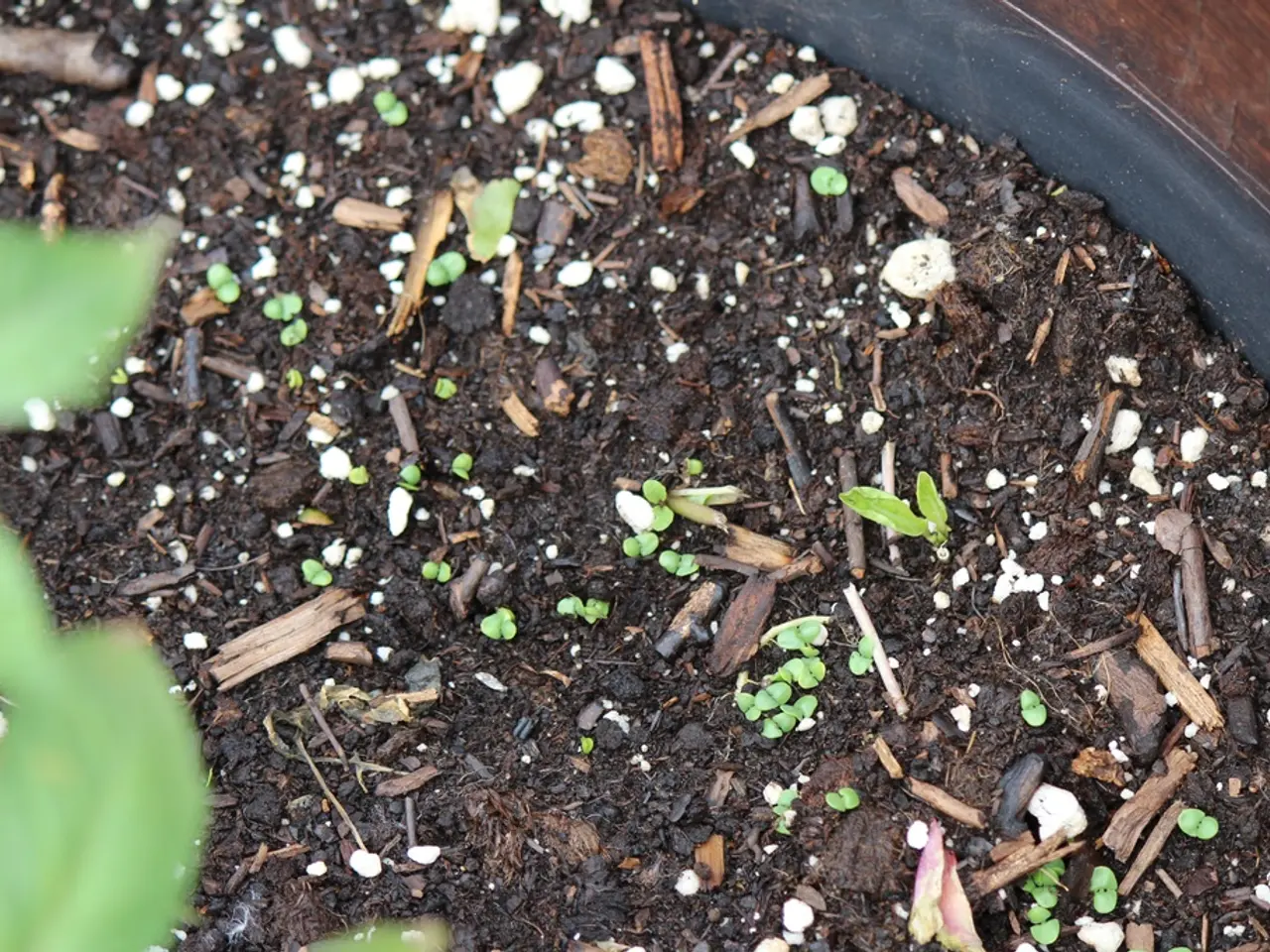An Easy-to-Follow Manual for Analyzing Your Garden's Soil Composition
In the realm of gardening, understanding and maintaining the pH levels of your soil is crucial for growing healthy plants. Here's a breakdown of two methods to test soil pH, along with some essential soil-related facts.
First, let's delve into a simple, DIY method using kitchen ingredients. This vinegar and baking soda test is a quick and easy way to get a rough idea of your soil's pH.
- Collect soil samples from about 3 to 6 inches deep from several spots in your garden and mix them into a composite sample.
- Place about two teaspoons of this soil into two separate clear containers.
- In the first container, add half a cup of white vinegar. If the soil fizzes or bubbles, it indicates the soil is alkaline (pH above 7). If there is no reaction, proceed to the next step.
- In the second container, add distilled water to moisten the soil and then add half a cup of baking soda. If this mixture fizzes or bubbles, the soil is acidic (pH below 7). No reaction in either container suggests the soil is roughly neutral (pH around 7).
While this method offers a fast and free solution, it only provides an approximate pH range. For more accurate results, home soil test kits like the MySoil Soil Test Kit or Redmond Agriculture's kit can be used. These kits offer exact pH values and nutrient analysis, along with fertilizer recommendations based on your soil's pH and nutrient content.
|Method|What it indicates|Pros|Cons| |------|-----------------|----|----| |Vinegar and baking soda kitchen test|Fizz with vinegar = alkaline; fizz with baking soda = acidic; no fizz ~ neutral|Fast, uses common household ingredients, free|Only approximate pH range, qualitative| |Home soil test kits (e.g., MySoil, Redmond)|Exact pH value and nutrient profile|Accurate, includes fertilizer recommendations|Cost, wait time for lab results (if applicable)|
Beyond pH testing, it's essential to understand other soil-related factors. Soil texture, for instance, refers to the proportions of sand, silt, and clay in the soil. A good soil structure allows for good porosity, enabling the free movement of water and oxygen, which is crucial for plant health as it prevents waterlogging.
Soil nutrient content, including nitrogen, phosphorus, potassium, magnesium, calcium, iron, and sulfur, is vital for growing healthy plants. Regular testing and adjustments of soil pH are essential for maintaining a thriving garden.
Cation exchange capacity (CEC) is a measure of a soil's ability to hold exchangeable cations. The CEC of a soil can be measured through various methods, including direct measurement and summation of base cations. The CEC is influenced by soil's clay content, mineral composition, pH, and organic matter.
Lastly, biological activity in the soil, such as the presence of earthworms and other organisms, is an indicator of its health and fertility. The ideal soil texture, often referred to as loamy soil, maintains a good balance of moisture and nutrients.
By following this guide, you'll be well-equipped to test and manage your soil pH using kitchen ingredients and home test kits, ensuring a thriving garden all year round.
Read also:
- Water Chemistry Dosage Guidance from AskBRS: Understanding What, How Much, and When to Add!
- Emerging populace advocates for a public assembly, referred to as the People's Parliament.
- Experimenting with a TikTok weighted vest strategy transformed my functional fitness journey, proving to be an effective approach.
- Interview with Management: Attracting Attendees, Boosting Income




